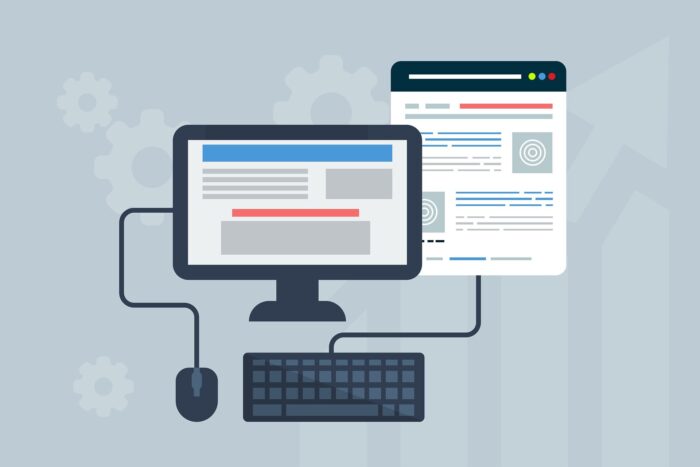Running a business site and not receiving the customer interaction you want can be tough. Once you have your website up and running, you might be getting a lot of clicks but no meaningful engagement. One of the main signs this is happening is that your metrics are displaying a high bounce rate. This article will discuss a number of measures for minimising bounce rates along with when it’s most necessary.
But first, some terminology and rules of thumb that will be helpful:
What a Bounce Rate Actually Measures
The bounce rate is the percentage of people leaving your website after viewing only one page or not searching any further. This is helpful in identifying whether people are going deeper into your website. Contrary to popular belief it isn’t a metric that Google uses to score the relevancy of your site. It is still an important engagement metric that you need to keep to a minimum (in some instances).
So when is a high bounce rate ok? Blogs can have a bounce rate of up to 90% and that’s fine because the user may have wanted to read one article and then leave. Treating low bounce rates as a metric of whether or not users got what they wanted can be useless in this scenario.
However, if you’re running a business website and people leave without clicking on your products, the bounce rate is something worth minimising. In this article, we’re assuming this particular situation so you can better optimise your store.
Adjusted Bounce Rate & Related Terms
Similarly, the adjusted bounce rate is something you need to keep track of. Sometimes it’s not enough to measure bounced pages by decontextualised metrics. Adjusted bounce rates comprise a website’s click rates and average session duration. Keep in mind, you’re looking at how many clicks your users give you on average, not just how much time they spend on the site.
Alternatively, you can compare the industry mean or your competitor’s rates (if you can manage to obtain those stats). Look for bounce rate benchmarks by industry to better understand where you are. This can be a more meaningful way of making sense of these numbers.
There is also a difference between the bounce rate and the exit rate. The exit rate is the percentage indicating the most frequent “last page” people view before leaving. It can be helpful in identifying where people stop looking through your offerings or where they get the last bit of information they need before exiting.
Examining the exit rate vs bounce rate can help you identify where the problem is in a more precise manner. It can also indicate which pages need work beyond just the landing page.
Now on to the tips:
Lower Bounce Rate Through Technical Optimisations

There are a lot of technical reasons one might not be staying on your website for a longer duration. For example, the page speed might be slow. People tend to leave a site if the page doesn’t load within 3 seconds. Keep track of your page speeds in Google analytics and do regular website health checks. We’ve done a whole article about optimising speeds, so be sure to check it out.
Sometimes issues can arise from a confusing page layout or annoying pop-ups. Never underestimate the advantages of responsive website design. A minimalist landing page might be a blessing if it can get the point across more easily and convince people to look further. End-user experience monitoring can be essential.
Similarly, do not confuse user experience with customer experience. UX design can make a website more usable but may not always lead to a sale. Customer experience is how to build a website to most efficiently lead customers down the sales funnel. Here are a few short tips:
- Categories and labels make things easier.
- Pictures are helpful.
- Important text needs to be enlarged (prices, discounts, return policies etc.).
- A related products carousel can help people compare and find similar products.
- Keep as few clicks as possible between the product search and the intended purchase. Decrease payment portal links, address entry, etc.
Increase Session Duration With Content Engagement

How to Make a Website More Engaging
Great content is the pillar of engagement. If people just don’t find it too enticing, they won’t stay long. You can always improve it by decreasing text for more images, better landing page copywriting, and clearer choices for users to click on or navigate pages with.
While it can vary based on what purpose your website serves, there are a few crucial things that you absolutely need. Here is the anatomy of a landing page:
- Unique selling proposition
- A great title, image, or video to draw the viewer in
- CTAs or enticing product offerings relevant to the audience
- Text or images that also support your brand or products
- Add customer testimonials, positive ratings from sites like Yelp, or positive media coverage
Bounce Rates & Relevance
Clearly, more engaging content can help people stay on the site and click around. While this can be an issue of quality, there are other factors. Sometimes you have what people need but it isn’t labelled with the correct keywords. If winter is coming up and you know people are looking for heaters, make sure you label these products with the correct synonyms (air heater, electric heater, etc.).
The site with a better grasp of all the terms visitors might search for will win out in the long run. This is also crucial for decreasing Social media or Google Ads bounce rates. You can search for relevant terms over SEMRush or other similar services.
It’s also important to check your ads and websites on tablets and mobile devices. The different sizes can squash images or eliminate text making ads less effective.
Decreasing Advertising Bounce Rate
Speaking of relevant ads, it can also be useful to view the origin of the problem from outside the website. A high bounce rate for Facebook ads or Google ads might mean the problem is in the marketing. A few ways to fix this:
- Have relevant ad copy and correct keywords
- Make sure you’re targeting the right consumer segment
- Make sure your ad is on a relevant platform
- Is the image and/or text getting ruined by the ad format?
Test your website from different locations
Operating in multiple markets can be difficult. You might be experiencing issues in localisation or language switches that deter customers. Check your website and ad copy from different regions using a VPN if your bounce rate is particularly high in another market.
Similarly, Your page speed might vary in a different region due to multiple factors. Cookie policies, for example, might alter the technical side of things as they are different from country to country. Another reason might be a lack of available payment methods (credit card, PayPal etc.) causing users from different countries to exit.


